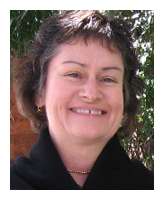Articles
A newly refined technology could give IVF clinic babies an uncontroversial lifetime supply of their own highly potent embryonic stem (ES) cells.
Susan Fisher, director of the UCSF Human Embryonic Stem Cell program, reported last week her team efficiently creates theoretically unlimited numbers of ES cells from the eighth cell that is routinely removed from blastomeres in Preimplantation Genetic Diagnosis (PGD) clinics—and that routinely result in pregnancies.
Theoretically, this means cells could now be routinely removed from IVF clinic embryos, to provide them later with a lifetime supply of their own, uncontroversial, ES cells.
“Back in the mid-2000’s, when California was trying to decide whether to fund ES cell research, thousands of interested people would come out to hear us speak about topics like this,” says Fisher, interviewed after her report to the New York Stem Cell Foundation conference last week. “It is possible this particular, refined approach will generate that kind of interest now.”
ES cells are the most potent stem cells. They can robustly differentiate into all the tissues of the human body, and can robustly proliferate. As they are brand new, they possess few mutations.
But as they traditionally have come from stored, spare IVF clinic embryos donated by other patients, they are not identical to patients when they hit clinics. Those patients then need to take harsh immunosuppressive drugs for years to avoid rejecting the cells.
And because the remainder of those embryos would be destroyed after ES cells are removed, they have been controversial for religious groups.
In recent years, scientists have turned in droves to creating, instead, Induced Pluripotential Stem Cells (IPSCs). These are made by taking old cells from an adult, and given four factors that turn back their internal clocks. Embryonic-like cells are created this way.
This has proved a boon to research, letting scientists create “disease in a dish” models on which to try drugs. But IPSCs are often riddled with mutations, as they come from adults. They have not yet hit the clinic as a result (although one trial is upcoming, see this BST story.)
 However, Fisher, following on the heels of very preliminary work published in Nature by ACT, has refined the ability to create possibly uncontroversial stem cells—that are immunological matches to patients. For, during the ever-more common fertility clinic procedure of PGD, a single cell is removed from eight cell blastomeres for analysis. Couples in danger of passing on dangerous mutations to their children often utilize this service. The cell is genetically analyzed, and if found to have key mutations, the embryo it came from is not implanted.
However, Fisher, following on the heels of very preliminary work published in Nature by ACT, has refined the ability to create possibly uncontroversial stem cells—that are immunological matches to patients. For, during the ever-more common fertility clinic procedure of PGD, a single cell is removed from eight cell blastomeres for analysis. Couples in danger of passing on dangerous mutations to their children often utilize this service. The cell is genetically analyzed, and if found to have key mutations, the embryo it came from is not implanted.
But that cell, ACT found, and Fisher confirms, if not removed and destroyed for genetic analysis, can be turned into a veritably unlimited supply of ES cells that are immunologically identical to the embyros from which they came. And as the embryos aren’t destroyed, but implanted into the mothers’ uteruses, the derivation of these tailor-made ES cells should be uncontroversial. “We will see how this is received,” Fisher says.
The process, she reported, is robust, if still not easy to pull off. In her project, which will be published in a peer-reviewed journal soon, the UCSF team derived ten human ES cell lines from blastomeres of four eight-cell embryos and one 12-cell embryo from a single couple. Then she compared them to standard ES cells.
The UCSF ES cells healthily “formed derivatives of the three germ layers” like standard ES cells, she reported. Furthermore, her team’s cells could form trophoblasts (placental cells) so well, her team created the first human trophoblast stem cell line—unlike standard ES cells. This could make the UCSF cells useful in the clinic for diseases affecting the placenta.
Will patients begin turning to such cells? A few companies in the mid-2000s started offering designer ES cells like these, but that practice ended due to lack of interest or understanding, Fisher says. Additionally, some technical problems—later fully rectified—associated with the earlier Nature ACT paper may have cast a pall on enthusiasm for the approach, others in the field note.
“It remains to be seen if a place will be found for both iPS and ES cells,” Fisher concludes.

